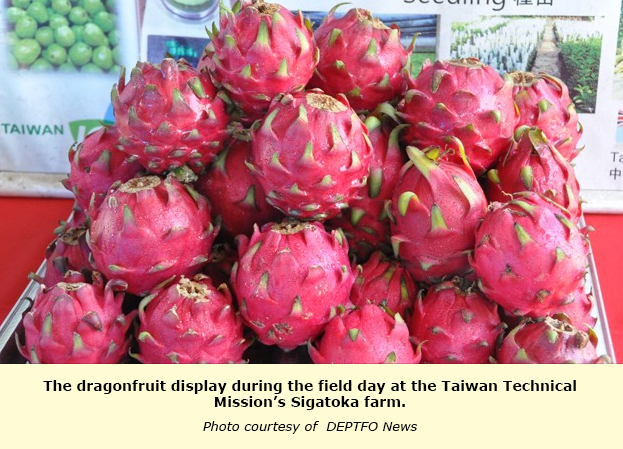The Ministry of Agriculture in collaboration with the Taiwan Technical Mission (TTM) recently organised a Dragon fruit field day at their Sigatoka farm as part of its efforts to release a promising variety soon.

While officiating at the field day, Deputy Secretary for Agriculture Development, Jone Sovalawa commended the collaborative work between the Taiwan Technical Mission and the Ministry of Agriculture on Research and Development for almost 20 years.
“We recognise the role research is playing in generating scientific data which paves the way forward for development. These scientific data are converted to practical information for the users, and these are players who contributed immensely in the agriculture sector. It also aids in sound decision making at the management level,” Mr Sovalawa said.
“Agriculture development is complex and requires on-going research and development to ensure that we keep abreast of new technologies that modernise agriculture, at the same time improve our agricultural outputs, address issues such as pests and diseases, off-season production and also tackle issues such as the effects of climate change on food production.
“We have made some significant achievements together through collaborative research with established institutions; including the Australian Centre for International Agriculture Research (ACIAR) in the establishment of the fruit project focusing on mango, pineapple and breadfruit.
“The anticipated findings from this project will be the improvement in the farming system and quality of harvest of the crop that best fit to consumer preference,” Mr Sovalawa added.
He stressed that most agriculture challenges cannot be solved alone as the collaborative efforts of institutions and private sectors in terms of expertise, funding and information sharing was crucial.
“Dragon fruit was introduced to Fiji in 2015, considered to be a promising, remunerative fruit crop,” Mr Sovalawa said. Research is still on-going, focusing on evaluation of the varieties and adaptable farming system which will enhance quality and increase production.”
“Once the variety is released, the responsibility will rest with our farmers and producers to produce what the market demands and most importantly to the quality and standard required. Presently, even some of our local high markets are still pleading for volume and consistency in supply,” he said.
The fruit is also known as Strawberry Pear, Dragonfruit, Pitaya, Night blooming Cereus, Belle of the night, Cinderella plant and Jesus in the Cradle.
Dragon fruit is named “Pitaya” because of the bracts or scales on the fruit skin and hence the name pitaya meaning ‘‘the scaly fruit’’.
It has ornamental value due to its beautiful large flowers (25cm) that bloom at night; they are creamy white in colour.
Source: DEPTFO News, Fiji Sun
